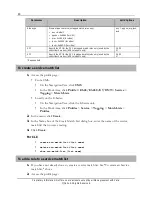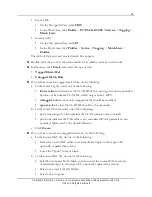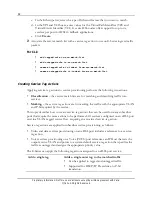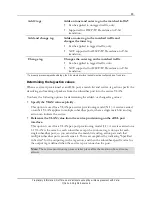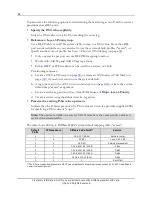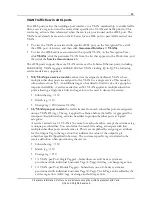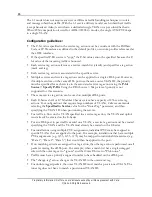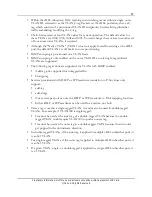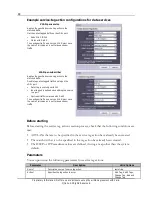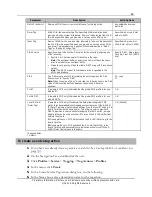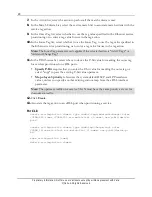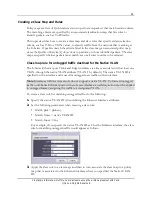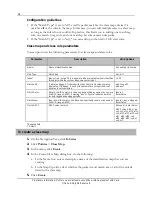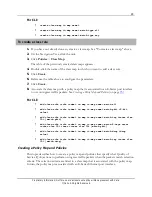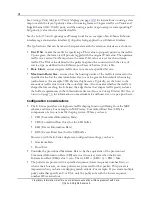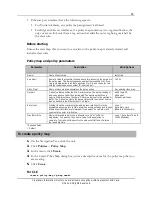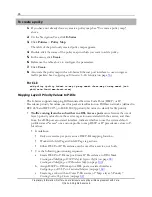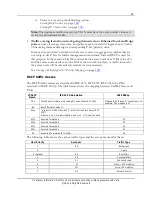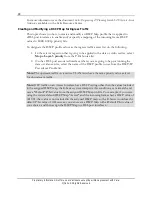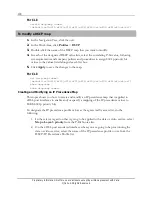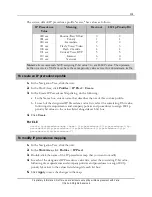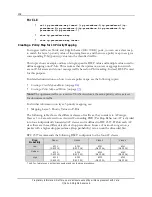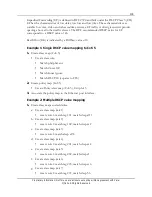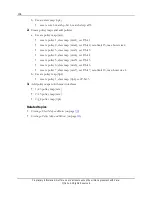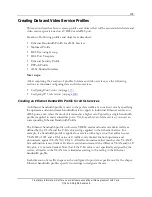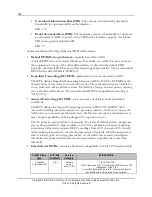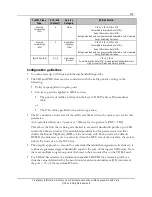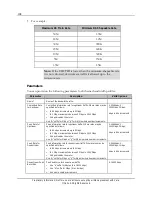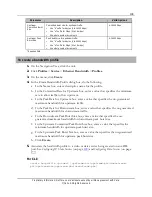
94
Proprietary Information: Not for use or disclosure except by written agreement with Calix.
© Calix. All Rights Reserved.
See
Creating a Policy Map for L3 Priority Mapping
(on page
102
) for instructions on using a class
map to match the layer-3 priority value of incoming frames of ingress traffic on Trunk and
Edge Ethernet (GE/10GE) ports, and then using a policy map to assign a corresponding P-
bit (priority) value into the classified traffic.
See the
Calix E-Series Engineering and Planning Guide
for an example of an E-Series Ethernet
interface tag action and an interface QoS policy being applied to an Ethernet interface.
The QoS actions that can be taken when packets match the selection criteria are as follows:
Out P-bit
- marks the traffic by specifying a P-bit value to properly prioritize the traffic.
Upon egress, the frame is still priority tagged with the original P-bit value. The upstream
traffic on a service VLAN must have the same P-bit value as is set for downstream
traffic. The P-bit value defined in the policy map must be consistent with the class of
service type, as defined in the Ethernet port Class of Service (CoS) table.
Rate Limit
- ensures ingress traffic does not exceed a specified bit rate.
Maximum Burst Size
- ensures that the bursting nature of the traffic is reduced to the
specified value. Set the maximum burst size to a value greater than default when using
jumbo frames (for example 9000 kbyte) at higher rates. Typically, set the burst to the
amount of traffic sent in twice the round trip time. Also consider whether the traffic is
shaped before reaching the E-Series; the edge device that shapes traffic greatly reduces
the buffer requirements in the infrastructure device. Also see
Creating Ethernet Port Class of
Service
(on page
71
) for information on maximum rate and burst size on a per-port basis.
Configuration Considerations
The E-Series ports have a single-rate traffic shaping function, differing from the MEF
scheme and terms. For example, in MEF terms, Committed Burst Size (CBS) is a
component of a two-rate traffic shaping system. Where you have:
CIR (Committed Information Rate)
CBS (Committed Burst Size) for the CIR buffer
EIR (Excess Information Rate)
EBS (Excess Burst Size) for the EIR buffer
However, with the E-Series single-rate configuration settings, you have:
Maximum Rate
Burst Size
Consider the provisioned Maximum Rate to be the equivalent of the provisioned
Committed Information Rate (CIR) rate in a two-rate system when the Excess
Information Rate (EIR) value = zero. That is, CIR + (EIR = 0) = PIR = Max.
The policies are processed in a specified sequence (lowest sequence number first), so
when a match occurs, no more policies are processed for that packet. This process is
important when you have overlapping match criteria. For example: If you create multiple
policy rules that specify an Out P-bit, only the policy rule with the lowest sequence
number ID is carried out.

